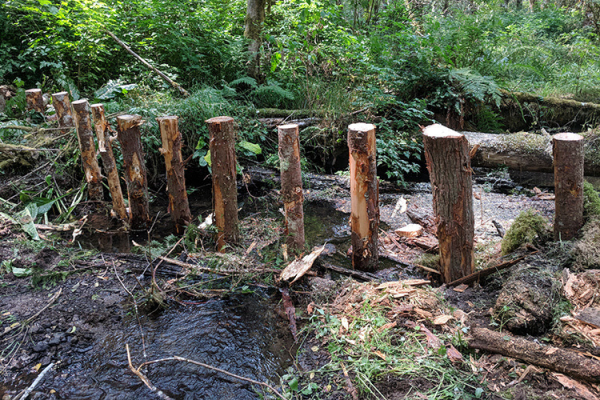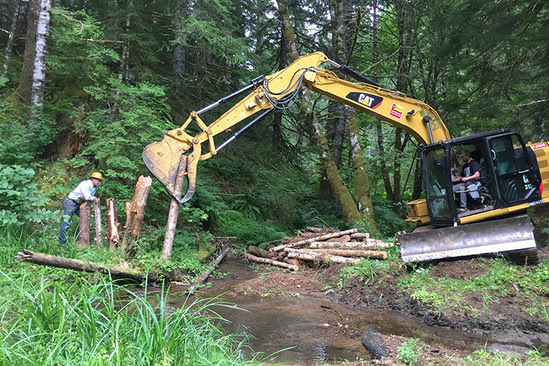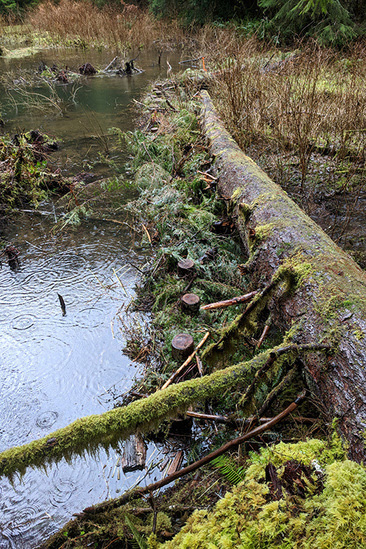NOAA partners managing an innovative pilot program in Oregon are constructing dam starter structures for beavers to finish building, creating slow water areas for juvenile Coho to thrive.
Analogs provide a solid foundation from which beavers can start building their dams. Photo: Upper Nehalem Watershed Council
On the Oregon coast, NOAA and partners are leveraging the strong engineering skills of their beloved state animal to restore important habitat for threatened coho salmon and other species.
Supported by NOAA, our partners at the Wild Salmon Center and Upper Nehalem Watershed Council are embarking on a pilot project. It will assist beavers with building dams in key areas of tributaries where juvenile migrating fish grow. Once built, beaver dams create slower moving sections of streams for juvenile fish to use as habitat.
Similar to estuaries and river delta habitats, the slow-moving pools of water behind beaver dams offer juvenile salmon critical time for feeding and growing before their trip to the ocean. Unlike man-made barriers to fish passage, adult salmon are able pass beaver dams when they migrate back upstream to spawn.
With these pilot projects, NOAA and partners are building foundation structures, called “analogs.” They are placed in areas where beavers once lived, and where the stream grade and size are optimal for juvenile salmon habitat. Think of them as the foundations of a home.





 Advertising
Advertising